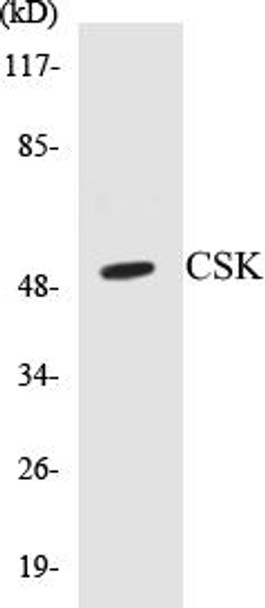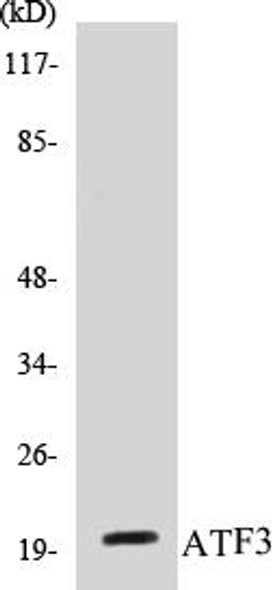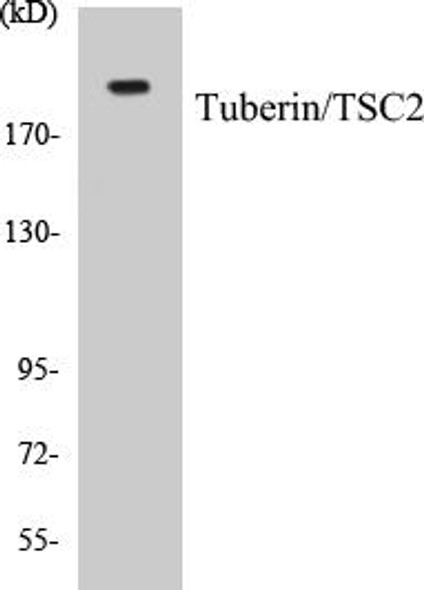Description
CSK Colorimetric Cell-Based ELISA Kit
The CSK Colorimetric Cell-Based ELISA Kit is a powerful tool for detecting and quantifying levels of specific proteins in cell cultures. This kit offers high sensitivity and accuracy, allowing researchers to obtain reliable and reproducible results for their experiments.The kit is specifically designed to measure protein levels in cell culture supernatants, providing valuable insights into cellular processes and signaling pathways. With its user-friendly protocol and efficient workflow, the CSK Colorimetric Cell-Based ELISA Kit is suitable for a wide range of research applications, including drug discovery, cancer research, and cell biology studies.
By utilizing this innovative kit, researchers can gain a deeper understanding of cellular mechanisms and pathways, paving the way for new discoveries and advancements in biomedical science. Take your research to the next level with the CSK Colorimetric Cell-Based ELISA Kit.
| Product Name: | CSK Colorimetric Cell-Based ELISA |
| Product Code: | CBCAB00291 |
| ELISA Type: | Cell-Based |
| Target: | CSK |
| Reactivity: | Human, Mouse, Rat |
| Dynamic Range: | > 5000 Cells |
| Detection Method: | Colorimetric 450 nmStorage/Stability:4°C/6 Months |
| Format: | 96-Well Microplate |
The CSK Colorimetric Cell-Based ELISA Kit is a convenient, lysate-free, high throughput and sensitive assay kit that can detect CSK protein expression profile in cells. The kit can be used for measuring the relative amounts of CSK in cultured cells as well as screening for the effects that various treatments, inhibitors (ie siRNA or chemicals), or activators have on CSK.
Qualitative determination of CSK concentration is achieved by an indirect ELISA format. In essence, CSK is captured by CSK-specific primary antibodies while the HRP-conjugated secondary antibodies bind the Fc region of the primary antibody. Through this binding, the HRP enzyme conjugated to the secondary antibody can catalyze a colorimetric reaction upon substrate addition. Due to the qualitative nature of the Cell-Based ELISA, multiple normalization methods are needed:
| 1. | A monoclonal antibody specific for human GAPDH is included to serve as an internal positive control in normalizing the target absorbance values. |
| 2. | Following the colorimetric measurement of HRP activity via substrate addition, the Crystal Violet whole-cell staining method may be used to determine cell density. After staining, the results can be analysed by normalizing the absorbance values to cell amounts, by which the plating difference can be adjusted. |
| Database Information: | Gene ID: 1445, UniProt ID: P41240, OMIM: 124095, Unigene: Hs.77793 |
| Gene Symbol: | CSK |
| Sub Type: | None |
| UniProt Protein Function: | CSK: a tyrosine kinase of the Csk family that phosphorylates and inhibits Src family kinases. Specifically phosphorylates Y504 on LCK, which acts as a negative regulatory site. Csk and the phospho-tyrosine phosphatase CD45 reciprocally regulate phosphorylation of the inhibitory tyrosine of the Src family kinases Lck and Fyn during T-cell receptor mediated signaling during thymic development. |
| UniProt Protein Details: | Protein type:Protein kinase, tyrosine (non-receptor); EC 2.7.10.2; Protein kinase, TK; Kinase, protein; TK group; Csk family Chromosomal Location of Human Ortholog: 15q24.1 Cellular Component: cytoplasm; cytosol; extrinsic to internal side of plasma membrane; plasma membrane Molecular Function:identical protein binding; kinase activity; non-membrane spanning protein tyrosine kinase activity; protein binding; protein C-terminus binding; protein-tyrosine kinase activity; receptor binding Biological Process: cell differentiation; cell migration; central nervous system development; epidermal growth factor receptor signaling pathway; innate immune response; negative regulation of Golgi to plasma membrane protein transport; protein amino acid phosphorylation; regulation of cell proliferation; regulation of cytokine production; T cell costimulation; T cell receptor signaling pathway; transmembrane receptor protein tyrosine kinase signaling pathway |
| UniProt Code: | P41240 |
| NCBI GenInfo Identifier: | 729887 |
| NCBI Gene ID: | 1445 |
| NCBI Accession: | P41240.1 |
| UniProt Secondary Accession: | P41240,Q2M3N2, Q6FGZ6, |
| UniProt Related Accession: | P41240 |
| Molecular Weight: | 50,704 Da |
| NCBI Full Name: | Tyrosine-protein kinase CSK |
| NCBI Synonym Full Names: | c-src tyrosine kinase |
| NCBI Official Symbol: | CSK |
| NCBI Protein Information: | tyrosine-protein kinase CSK |
| UniProt Protein Name: | Tyrosine-protein kinase CSK |
| UniProt Synonym Protein Names: | C-Src kinase; Protein-tyrosine kinase CYL |
| Protein Family: | Chloroplast sensor kinase |
| UniProt Gene Name: | CSK |
| UniProt Entry Name: | CSK_HUMAN |
| Component | Quantity |
| 96-Well Cell Culture Clear-Bottom Microplate | 2 plates |
| 10X TBS | 24 mL |
| Quenching Buffer | 24 mL |
| Blocking Buffer | 50 mL |
| 15X Wash Buffer | 50 mL |
| Primary Antibody Diluent | 12 mL |
| 100x Anti-Phospho Target Antibody | 60 µL |
| 100x Anti-Target Antibody | 60 µL |
| Anti-GAPDH Antibody | 60 µL |
| HRP-Conjugated Anti-Rabbit IgG Antibody | 12 mL |
| HRP-Conjugated Anti-Mouse IgG Antibody | 12 mL |
| SDS Solution | 12 mL |
| Stop Solution | 24 mL |
| Ready-to-Use Substrate | 12 mL |
| Crystal Violet Solution | 12 mL |
| Adhesive Plate Seals | 2 seals |
The following materials and/or equipment are NOT provided in this kit but are necessary to successfully conduct the experiment:
- Microplate reader able to measure absorbance at 450 nm and/or 595 nm for Crystal Violet Cell Staining (Optional)
- Micropipettes with capability of measuring volumes ranging from 1 µL to 1 ml
- 37% formaldehyde (Sigma Cat# F-8775) or formaldehyde from other sources
- Squirt bottle, manifold dispenser, multichannel pipette reservoir or automated microplate washer
- Graph paper or computer software capable of generating or displaying logarithmic functions
- Absorbent papers or vacuum aspirator
- Test tubes or microfuge tubes capable of storing ≥1 ml
- Poly-L-Lysine (Sigma Cat# P4832 for suspension cells)
- Orbital shaker (optional)
- Deionized or sterile water
*Note: Protocols are specific to each batch/lot. For the correct instructions please follow the protocol included in your kit.
| Step | Procedure |
| 1. | Seed 200 µL of 20,000 adherent cells in culture medium in each well of a 96-well plate. The plates included in the kit are sterile and treated for cell culture. For suspension cells and loosely attached cells, coat the plates with 100 µL of 10 µg/ml Poly-L-Lysine (not included) to each well of a 96-well plate for 30 minutes at 37°C prior to adding cells. |
| 2. | Incubate the cells for overnight at 37°C, 5% CO2. |
| 3. | Treat the cells as desired. |
| 4. | Remove the cell culture medium and rinse with 200 µL of 1x TBS, twice. |
| 5. | Fix the cells by incubating with 100 µL of Fixing Solution for 20 minutes at room temperature. The 4% formaldehyde is used for adherent cells and 8% formaldehyde is used for suspension cells and loosely attached cells. |
| 6. | Remove the Fixing Solution and wash the plate 3 times with 200 µL 1x Wash Buffer for five minutes each time with gentle shaking on the orbital shaker. The plate can be stored at 4°C for a week. |
| 7. | Add 100 µL of Quenching Buffer and incubate for 20 minutes at room temperature. |
| 8. | Wash the plate 3 times with 1x Wash Buffer for 5 minutes each time. |
| 9. | Add 200 µL of Blocking Buffer and incubate for 1 hour at room temperature. |
| 10. | Wash 3 times with 200 µL of 1x Wash Buffer for 5 minutes each time. |
| 11. | Add 50 µL of 1x primary antibodies (Anti-CSK Antibody and/or Anti-GAPDH Antibody) to the corresponding wells, cover with Parafilm and incubate for 16 hours (overnight) at 4°C. If the target expression is known to be high, incubate for 2 hours at room temperature. |
| 12. | Wash 3 times with 200 µL of 1x Wash Buffer for 5 minutes each time. |
| 13. | Add 50 µL of 1x secondary antibodies (HRP-Conjugated AntiRabbit IgG Antibody or HRP-Conjugated Anti-Mouse IgG Antibody) to corresponding wells and incubate for 1.5 hours at room temperature. |
| 14. | Wash 3 times with 200 µL of 1x Wash Buffer for 5 minutes each time. |
| 15. | Add 50 µL of Ready-to-Use Substrate to each well and incubate for 30 minutes at room temperature in the dark. |
| 16. | Add 50 µL of Stop Solution to each well and read OD at 450 nm immediately using the microplate reader. |
(Additional Crystal Violet staining may be performed if desired – details of this may be found in the kit technical manual.)






